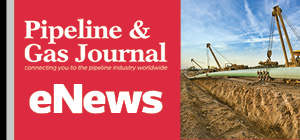U.S. Oilfield Giants Brace for Tough Times as Price Slide Rattles Producers
(Reuters) — Top U.S. oilfield service firms have signaled a challenging period ahead as a recent slide in oil prices pushes producers to temper their drilling activity and rethink their budgets.
SLB, Halliburton, and Baker Hughes all flagged cautious customer spending in their first-quarter reports, citing a lack of visibility, especially in North America.
Higher output from the OPEC+ grouping and a global tariff war that has raised demand concerns drove crude prices CLc1 to near $55 a barrel this month, from around $78 just before U.S. President Donald Trump assumed office in January.
"With oil prices falling out of the well-defined range that had persisted for much of the past 2+ years, producer budgets are encountering meaningful strain for the first time in several years," said Raymond James analysts.
Many producers have warned that drilling becomes unprofitable below $65 per barrel. Brent crude LCOc1 was trading around $63 on May 9.
Diamondback Energy trimmed its 2025 capital budget by $400 million and said it would drill and complete fewer wells, while Coterra Energy said it would cut its Permian rig count by 30% in the second half of the year.
The cuts by the independent producers could potentially affect the service firms that supply them with rigs, crews, and equipment.
Halliburton CEO Jeff Miller said customers were reviewing 2025 plans, which could lead to more idle time for fleets and, in some cases, sending equipment overseas or into retirement.
Analysts at Jefferies said while delays in North American activity have now stretched into the second quarter, international projects are facing slowdowns.
SLB flagged slow starts in Mexico and Saudi Arabia, and now expects global upstream investment to decline in 2025.
Baker Hughes forecast a low double-digit drop in North American spending and mid-to-high single-digit cuts internationally.
Tariffs are also adding fresh uncertainty, including driving up equipment costs.
Halliburton forecast a 2-cents-to-3-cents per share impact in the second quarter from the trade tensions, while Baker Hughes warned of a $100 million to $200 million hit to 2025 EBITDA if tariffs stay in place.
Meanwhile, all three companies are concentrating on pockets of resilience such as LNG infrastructure, power grid upgrades, and data center-driven power demand to weather a slower, more uneven recovery.
Baker Hughes expects to book at least $1.5 billion of orders in data-center equipment over the next three years.
"We're really not seeing customers pull back from LNG, gas infrastructure or the data-center projects," said CEO Lorenzo Simonelli.
Related News
Related News

- Kinder Morgan Proposes 290-Mile Gas Pipeline Expansion Spanning Three States
- Enbridge Plans 86-Mile Pipeline Expansion, Bringing 850 Workers to Northern B.C.
- Three Killed, Two Injured in Accident at LNG Construction Site in Texas
- Tallgrass to Build New Permian-to-Rockies Pipeline, Targets 2028 Startup with 2.4 Bcf Capacity
- TC Energy Approves $900 Million Northwoods Pipeline Expansion for U.S. Midwest
- U.S. Pipeline Expansion to Add 99 Bcf/d, Mostly for LNG Export, Report Finds
- Enbridge Adds Turboexpanders at Pipeline Sites to Power Data Centers in Canada, Pennsylvania
- Great Basin Gas Expansion Draws Strong Shipper Demand in Northern Nevada
- Cheniere Seeks FERC Approval to Expand Sabine Pass LNG Facility
- Heath Consultants Exits Locate Business to Expand Methane Leak Detection Portfolio





Comments